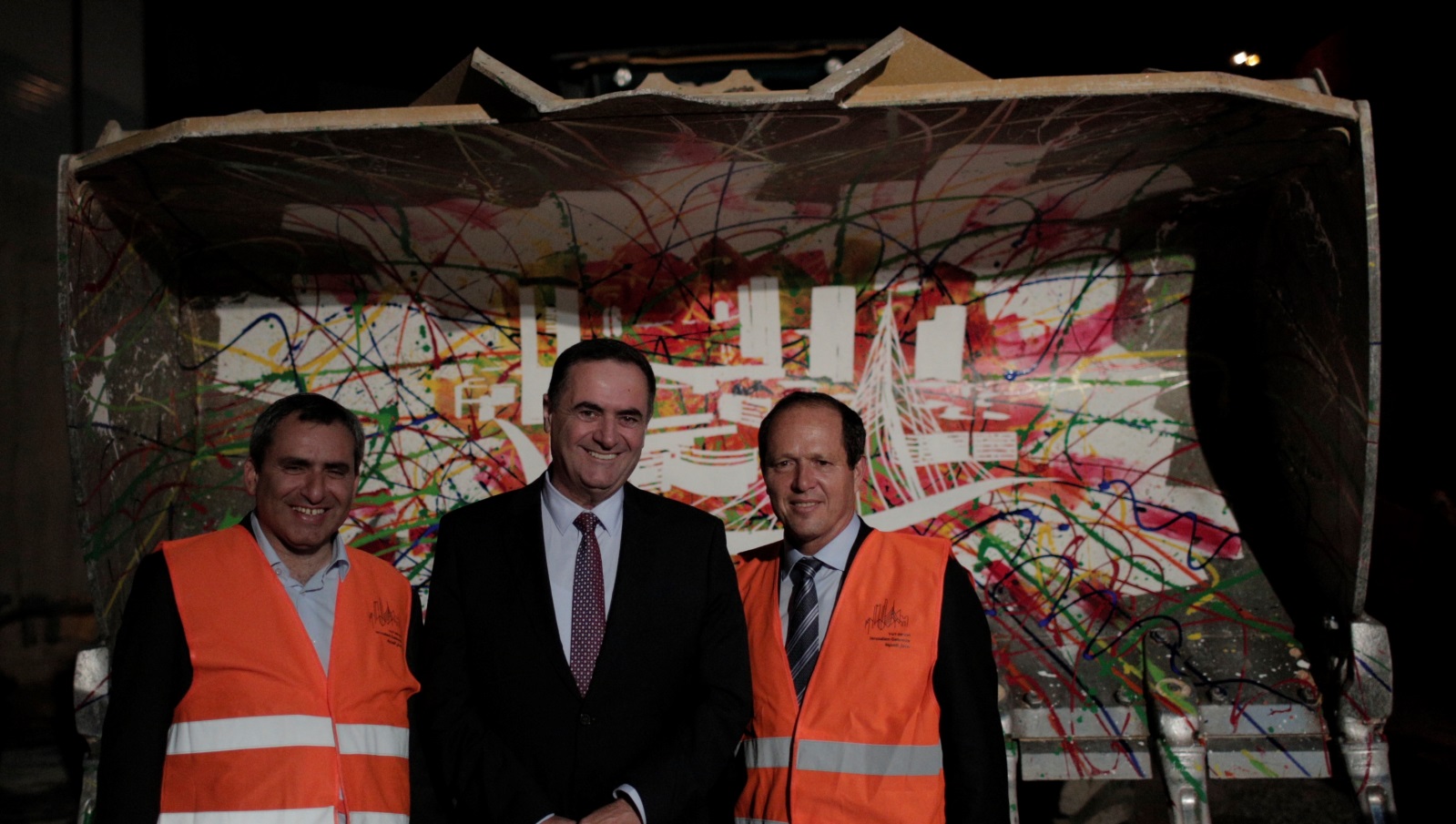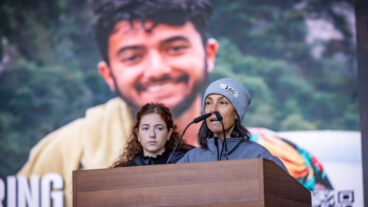I knew the Jerusalem Gateway cornerstone-laying ceremony wouldn’t be a run-of-the-mill press event as soon as I reached the registration desk on the bare ground on which the ₪$370 million business district will be constructed over the next few years.
Along with the usual nametag necklace, each participant was handed an orange safety vest – not for safety as much as for a kitschy sense of excitement for this event on Shazar Boulevard near the western entrance of the capital city.

Giant earth-movers were backlighted in purple atop huge piles of rocks on the edges of the site, located near Jerusalem’s convention center and central bus station. Members of the press, politicians, corporate and philanthropic VIPs – and lots of security and support personnel – mingled over plates of hors d’oeuvres.
When we were asked to take our seats facing a stage and video screen, we found that care had been taken to keep us comfortable in the normally cool Jerusalem night air. Heat lamps glowed at the end of each row, and every other seat had a soft, warm throw blanket folded on top of it for the taking.

Naturally there would be speeches at this ceremony, held on October 26th, announcing the start of a massive project: 24 buildings spread over 52 acres, encompassing business centers, government offices, tourist attractions, hotels, leisure and culture venues, all at the nexus of what will be Israel’s largest integrated transportation hub.

Indeed, we heard from Jerusalem Mayor Nir Barkat, Minister of Transportation Yisrael Katz and Minister of Jerusalem Affairs Ze’ev Elkin.
Later on, these men collectively hit a button that lit up a tunnel leading from the construction site of the Jerusalem-Tel Aviv fast train to the Jerusalem Gateway construction site, from which emerged a bulldozer with its clawed ripper decorated in colorful paint splotches.

But before the speeches, we were treated to a high-energy, percussion-heavy performance by Mayumana, one of Israel’s premiere modern-dance troupes. Their first number had them popping up in one of the purple-lighted earthmovers on the hill of rocks.

I was sitting next to Israel Ganot, managing director of MassChallenge Israel startup accelerator, which will occupy one of the planned skyscrapers expected to be finished in five to seven years. Ganot told me that the complex will include centers for entrepreneurship and innovation.
“The location is exciting because it will be within a five-minute walk of the Jerusalem-Tel Aviv train station,” Ganot said. “One of our goals is to connect the ecosystems of Jerusalem and Tel Aviv, and a 30-minute ride will make our companies more accessible to the Tel Aviv ecosystem. We’re going to have a wait a few years, but once it’s ready it’s going to be an amazing center.”

In addition to the high-speed train, the new business district will be served by two light-rail lines as well as public and private transit routes.
The master plan for the Jerusalem Gateway project was planned for the municipality by the Pirchi-Tzafrir architecture firm of Bnei Brak. The German architectural firm Topoek1 is designing the project’s public spaces, which will include pedestrian walkways.















